Pomeranians almost always come in orange or cream. If you’ve ever seen one of these dogs out and about, there is a good chance that it was orange. However, the AKC actually recognizes several other pomeranian colors that you may want to keep in mind. If you’re looking for something a bit different than the typical Pomeranian colors, then you have options.
Below, we’ve listed the rarest Pomeranian colors all the way to the most common colors. Most of these colors are recognized by the AKC. However, our rarest color is not.
Lavender Pomeranian

Lavender Pomeranians are the most expensive color you can get of these dogs.
©iStock.com/TRAVELARIUM
The rarest Pomeranian color is lavender. Despite the name, these dogs are more brown than actually purple. They can also come with several markings, including white. Often, these dogs are born with a white or cream coat that then lightens up to lavender as they age. However, some dogs are born brown.
Lavender Pomeranians are typically healthy dogs but may be more prone to skin allergies than other Pomeranian colors. They also have a higher risk of developing alopecia X, which causes hair loss.
They may also be more likely to inherit other genetic traits, as there is a fair amount of inbreeding involved in making this coloration.
Because this color is so rare, it is also expensive. However, it does stand out from other Pomeranians and is relatively sought after by breeders and owners.
2. Brindle Pomeranian
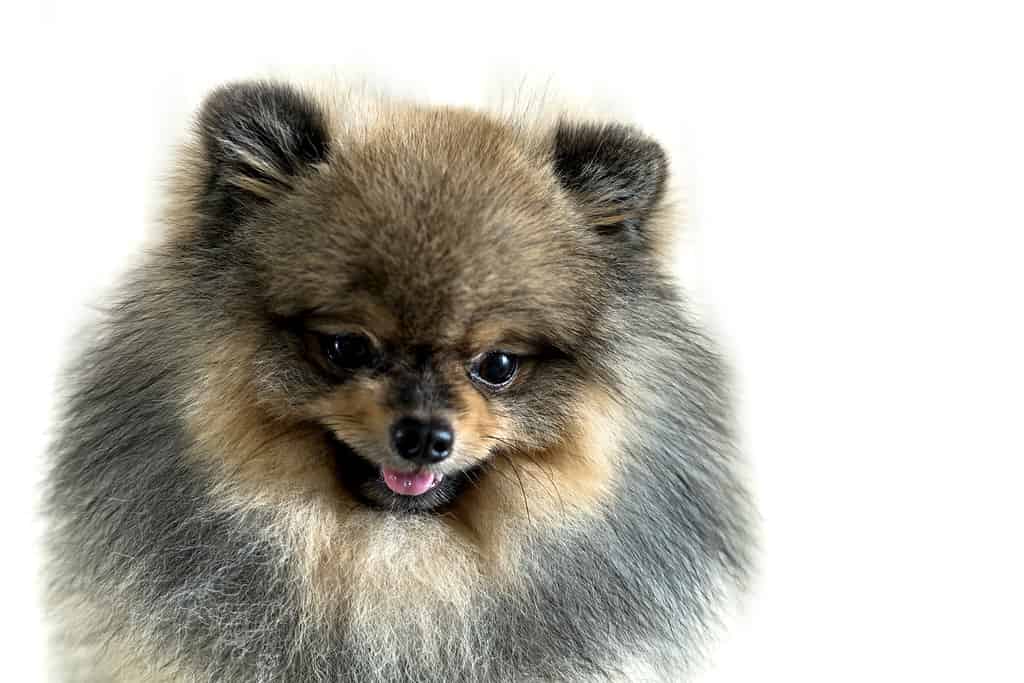
Brindle Pomeranians have “
tiger
stripes” that give them a very unique appearance.
©iStock.com/Naypong
These Pomeranians are relatively rare. They have a coat that is made up of two or more colors, usually black and orange or brown and white. They can also have stripes or spots of different colors on their coat.
Unlike lavender Pomeranians, this coloration doesn’t seem to be less healthy than any other color. However, they do require two recessive genes to come in this coloration. Therefore, some inbreeding may be involved.
3. Blue Pomeranian
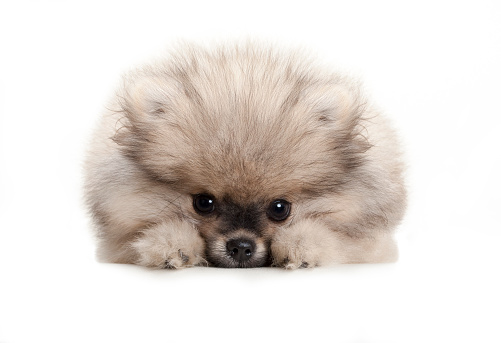
Despite what the name sounds like, these Pomeranians aren’t
actuallyblue. Instead, they’re more gray.
©Monica Click/iStock via Getty Images
Blue Pomeranians are more accurately described as “light grey.” However, you shouldn’t let the AKC or breeders hear you say that! Officially, this coloration is known as “blue” for one reason or another.
These dogs can range from relatively light grey, like the picture above, or they can be very dark steel grey. Either way, they are all described as blue.
While these dogs are rare, they aren’t nearly as rare as some of the other colorations we’ve discussed. Therefore, they tend to have less inbreeding and are generally healthier. However, they are still prone to the same health problems that other Pomeranians have, such as skin allergies and dental problems.
While some claim that these dogs are more affectionate than other Pomeranians, there is no evidence that coat color affects temperament.
4. Wolf Sable Pomeranian
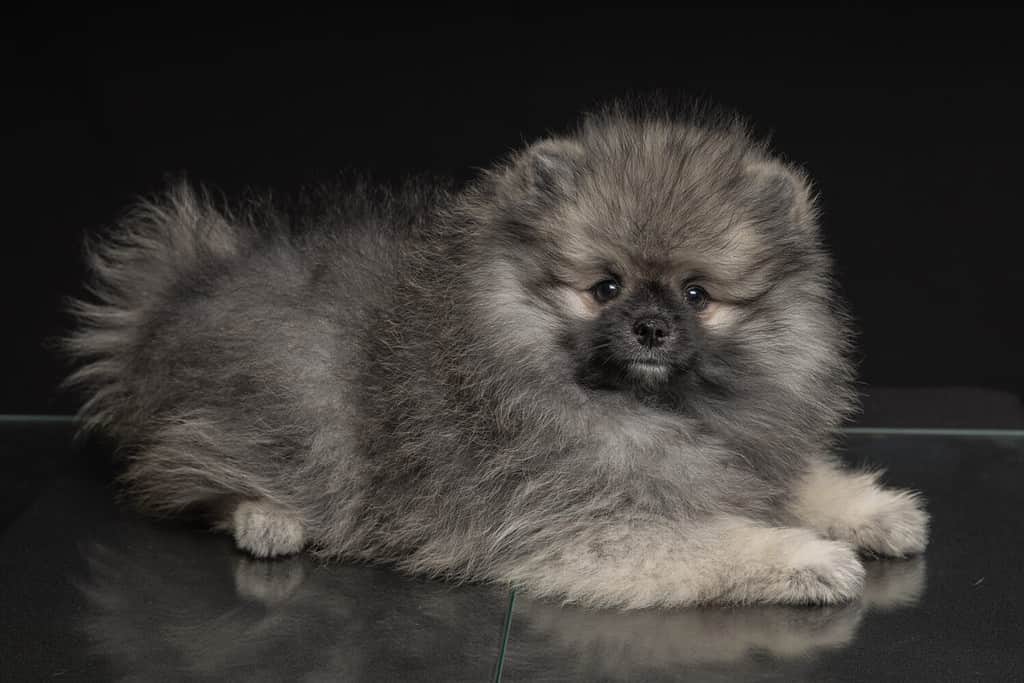
These Pomeranians are quite rare and sometimes confused for blue Pomeranians.
©Fotofrafrnd/Shutterstock.com
Wolf sable Pomeranians are another rare color. They have a coat that is made up of a mix of black, brown, and gray hairs. Wolf sable Pomeranians can also have white or cream markings on their chest, paws, and tails.
These dogs are a bit less sought after than other canines. They aren’t as “pretty” as other dogs out there, so there tend to be fewer buyers looking for them. Therefore, they’re rare largely because they aren’t as sought after (so fewer people breed them).
That said, these dogs can make great companion animals.
5. White Pomeranian

Even though Pomeranians are quite small, their genetic line partially comes from large sled dogs.
©Anya Poustozerova/Shutterstock.com
White Pomeranians are rarer, but they’re still more common than some of the other dogs on this list. These solid white dogs don’t have any other markings, and their coats range from stark white to cream. They’re typically fairly healthy dogs, as they pull their genes from a larger gene pool.
Beyond that, these dogs look and act like other Pomeranians. There is plenty of anecdotal evidence about how specifically colored dogs act differently, but none of this is scientifically proven.
6. Black Pomeranian
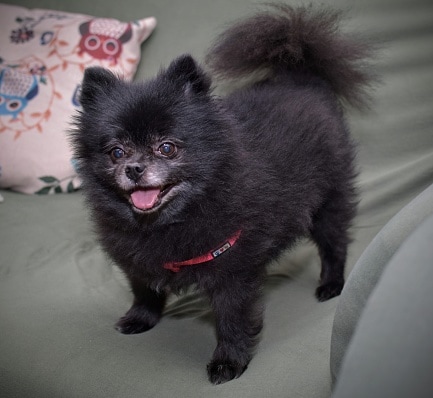
If you want a common color that isn’t orange or cream, you may want to try a black Pomeranian.
©David Illi/iStock via Getty Images
Surprisingly, black Pomeranians aren’t that uncommon. In fact, they are found throughout most parts of the country, and you probably won’t pay much more for them, either. These dogs have almost fully solid coats, though some markings are possible.
Beyond their darker color, these dogs look and act like any other Pomeranian. Their black fur tends to stand out more when they shed, though, so you may want to invest in a stricter grooming routine.
7. Chocolate Pomeranian
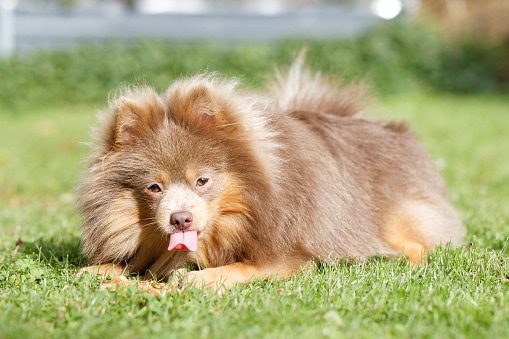
On top of their main color, Pomeranians can also have a range of different markings.
©Wirestock/iStock via Getty Images
Chocolate Pomeranians are completely brown and closely resemble their orange counterparts. In this case, the orange just got very dark, turning it into brown. Typically, these dogs are fairly healthy despite being rarer than the typical cream or orange Pomeranian. They’re common enough to avoid inbreeding.
For the most part, these dogs are also affectionate and have the same temperament as any other Pomeranian. There are some misconceptions that they are less cuddly, but this isn’t the case. They make wonderful companion animals that can also be easily found (unlike some of the rarer colors).
8. Orange Pomeranian
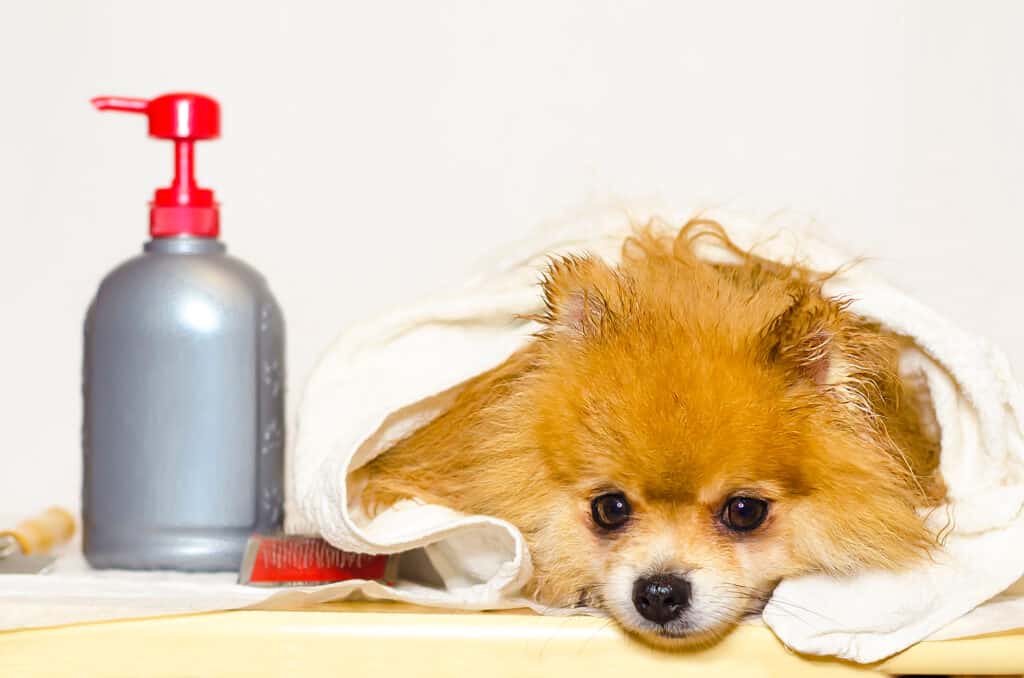
There are many shades of “orange” that a Pomeranian can come in.
©ElenaYakimova/Shutterstock.com
You’ve probably seen an orange Pomeranian. However, the AKC actually divides this color into several different shades. Officially, “orange” refers to the brighter orange/brown color. This color is probably what many people think of as the “default” coloration, but it is rarer than many people think.
You can probably find a Pomeranian in this color, and they probably won’t cost more money. Therefore, this coloration falls squarely in the “common” category.
9. Cream Pomeranian
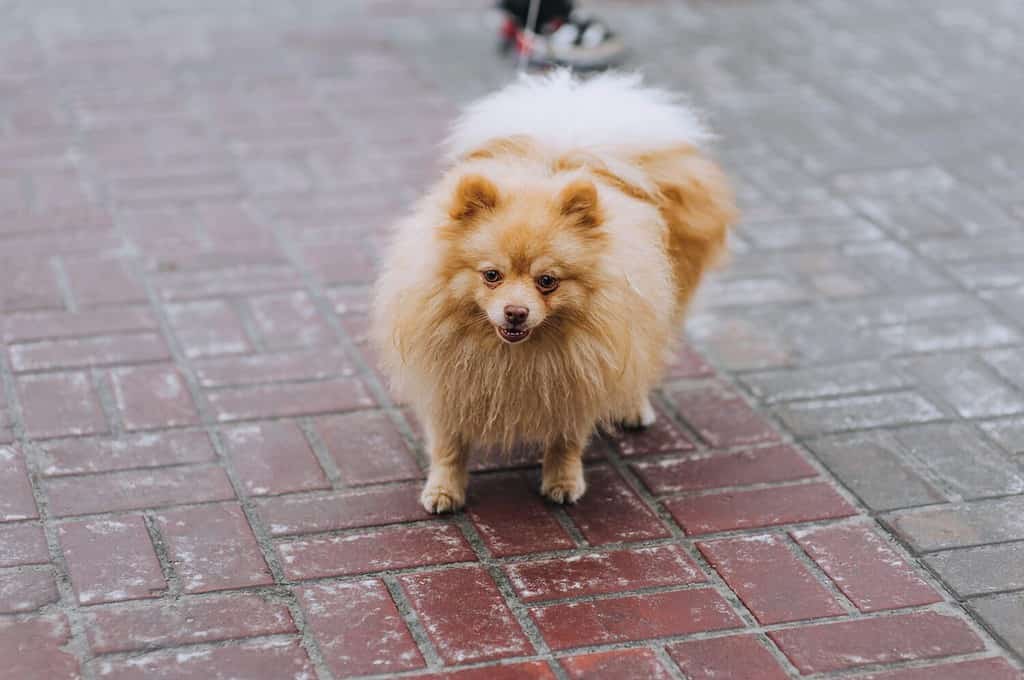
Out of all the colors, cream Pomeranians are the most noticeable.
©Shchus/Shutterstock.com
Cream Pomeranians are very common. They have a solid cream coat with no other markings. Cream Pomeranians are typically healthy dogs, as they are exceptionally common and have a large gene pool. These dogs are the “lighter” version of orange Pomeranians and are actually the more common of the two.
If you adopt a Pomeranian, there is a good possibility that it will be cream. These dogs are plentiful and produced by nearly every breeder. They also make up the majority of the dogs in the show ring.
Other Pomeranian Colors
We’ve listed the most common and AKC-accepted colors above. However, the AKC also recognizes several other Pomeranian markings that can go with these colors, like sable and merle. Technically, these are markings – not colors in their own right.
That said, Merle Pomeranians can make it challenging to detect the underlying coat color. Other markings may also cover up the base color, making it hard to tell exactly what color Pomeranian you have.
You may decide to adopt one of these unique Pomeranians, which tend to be rarer than their solid counterparts. However, you should keep in mind that these dogs may be more prone to health problems, especially Merle Pomeranians.
What Color Pomeranian is Right for You?
The best way to choose a Pomeranian color is to consider your personal preferences. Do you prefer a solid color or a patterned color? Do you want a rare color or a more common color? Once you have considered your preferences, you can start to narrow down your choices.
It is also important to remember that the color of a Pomeranian does not affect their personality or temperament. All Pomeranians are loving, affectionate, and intelligent dogs.
In the end, choosing a puppy from a quality breeder is much more important than selecting the “perfect” color. Because all colored Pomeranians act the same, one won’t necessarily be better for your lifestyle than another.
Summary of Pomeranian Colors
| Rank | Pomeranian Color |
|---|---|
| 1 | Lavender |
| 2 | Brindle |
| 3 | Blue |
| 4 | Wolf Sable |
| 5 | White |
| 6 | Black |
| 7 | Chocolate |
| 8 | Orange |
| 9 | Cream |
Ready to discover the top 10 cutest dog breeds in the entire world?
How about the fastest dogs, the largest dogs and those that are -- quite frankly -- just the kindest dogs on the planet? Each day, AZ Animals sends out lists just like this to our thousands of email subscribers. And the best part? It's FREE. Join today by entering your email below.
Thank you for reading! Have some feedback for us? Contact the AZ Animals editorial team.








